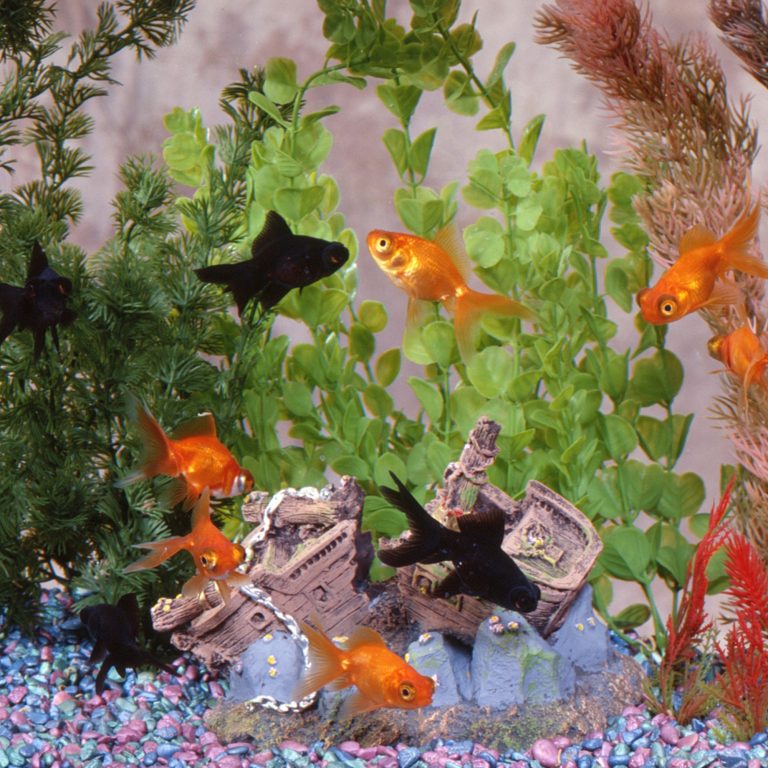Achieve Precision: Tailoring the Ideal Environment with a Heat Pad Thermostat
Enhancing Your Reptile’s Habitat
When it comes to providing the best possible environment for your reptile, proper heating is essential. Reptiles are ectothermic creatures, meaning they rely on external sources of heat to regulate their body temperature. This is why it’s important to create a habitat that mimics their natural environment, and one way to achieve this is through the use of reptile heating pads.
The Importance of Proper Heating
Maintaining the right temperature in your reptile’s habitat is crucial for their overall health and well-being. Reptiles have specific temperature requirements that vary depending on their species. Providing the appropriate heat levels helps to facilitate important biological processes such as digestion, metabolism, and immunity. Failure to meet these temperature needs can lead to stress, digestive issues, and even compromised immune function.
Introduction to Reptile Heating Pads
Reptile heating pads, also known as heat mats or heat tape, are designed to provide a localized heat source for your reptile’s enclosure. These pads are placed beneath the enclosure or on one side of the tank, creating a warm area that allows your reptile to thermoregulate by moving between warmer and cooler zones as needed.
Reptile heating pads come in various sizes to accommodate different enclosure sizes and reptile species. They are typically low wattage and produce a steady, gentle heat that mimics the warmth of the sun. This allows your reptile to bask and regulate their body temperature effectively.
To learn more about reptile heating pads, check out our article on reptile heating pads. It’s important to note that the use of a reptile heat pad thermostat is highly recommended when using a heating pad. A heat pad thermostat helps regulate and maintain the desired temperature range, ensuring the well-being of your reptile. Understanding the benefits and considerations of using a heat pad thermostat is crucial, and we will explore this further in the upcoming sections.
By understanding the importance of proper heating and introducing the concept of reptile heating pads, you can provide your reptile with a comfortable and suitable habitat. Remember to always research the specific temperature requirements of your reptile species and consult with a veterinarian or reptile expert to ensure you are meeting their unique needs.
Understanding Heat Pad Thermostats
When it comes to providing the optimal environment for your reptile, heat pad thermostats play a crucial role in maintaining the right temperature. Let’s explore what heat pad thermostats are and how they work to ensure the comfort and well-being of your scaly friend.
What is a Heat Pad Thermostat?
A heat pad thermostat is a device specifically designed to regulate and control the temperature of reptile heating pads. It acts as a temperature management system, allowing you to maintain a consistent and safe heat level within your reptile’s habitat.
By connecting the heat pad to the thermostat, you gain the ability to adjust and monitor the temperature with ease. This ensures that your reptile’s habitat remains within the desired temperature range, creating a comfortable and suitable environment for your pet.
How Heat Pad Thermostats Work
Heat pad thermostats utilize a combination of sensors, controls, and electrical circuits to function effectively. The main components of a heat pad thermostat include:
-
Temperature Sensor: The temperature sensor is responsible for measuring the current temperature of the reptile’s habitat. It detects any fluctuations and sends this information to the control unit.
-
Control Unit: The control unit processes the temperature data received from the sensor and compares it to the desired temperature set by the user. If the current temperature is lower than the set temperature, the control unit activates the heating pad. Once the desired temperature is reached, the control unit turns off the heating pad.
-
Display and Controls: Heat pad thermostats often feature a digital display that shows the current temperature inside the habitat. It also allows you to set and adjust the desired temperature. The controls provide an intuitive interface for managing the thermostat’s settings.
By constantly monitoring and adjusting the heat output of the reptile heating pad, the heat pad thermostat ensures that the temperature remains within the ideal range for your reptile’s species. This precise temperature control is essential for their thermoregulation and overall well-being.
To choose the right heat pad thermostat for your reptile, consider factors such as compatibility with reptile heating pads, the temperature range and accuracy, as well as user-friendly features and controls. For more information on selecting the best reptile heating pads, refer to our article on best reptile heating pads.
Heat pad thermostats provide numerous benefits, including temperature regulation, prevention of overheating and burns, as well as energy efficiency and cost savings. In the next section, we will delve deeper into these advantages and explore how they enhance your reptile’s habitat.
Benefits of Using a Heat Pad Thermostat
When it comes to creating the ideal environment for your reptile, a heat pad thermostat offers several important benefits. By incorporating a thermostat into your reptile’s habitat, you can ensure proper temperature regulation and control, prevent overheating and burns, and even save energy and costs.
Temperature Regulation and Control
One of the key benefits of using a heat pad thermostat is the ability to regulate and control the temperature of your reptile’s habitat. With a thermostat, you can set the desired temperature range for your reptile’s specific needs. The thermostat then monitors the temperature and automatically adjusts the heat pad accordingly, ensuring that the habitat remains within the optimal temperature range.
Maintaining the proper temperature is crucial for reptiles, as it helps support their overall health and well-being. Different reptile species have varying temperature requirements, and a heat pad thermostat allows you to provide the precise environment that your reptile needs. By achieving the right temperature, your reptile can thrive and exhibit natural behaviors.
Preventing Overheating and Burns
Another significant advantage of utilizing a heat pad thermostat is its ability to prevent overheating and burns. Heat pads without thermostats can sometimes generate excessive heat, which may lead to dangerous temperatures for your reptile. This can result in thermal burns or discomfort for your pet.
By using a heat pad thermostat, you can set a maximum temperature limit and ensure that the heat pad never exceeds that threshold. This preventive measure safeguards your reptile from potential burns or discomfort caused by excessive heat. It provides you with peace of mind, knowing that your reptile’s habitat is being closely monitored and regulated.
Energy Efficiency and Cost Savings
In addition to temperature control and safety, a heat pad thermostat can contribute to energy efficiency and cost savings. Without a thermostat, a heat pad may constantly run at maximum capacity, consuming unnecessary energy and potentially resulting in higher electricity bills.
By utilizing a heat pad thermostat, you can optimize the heat pad’s operation, ensuring that it only activates when necessary to maintain the desired temperature range. This intelligent control helps conserve energy and reduces costs in the long run. Additionally, a thermostat allows for more precise temperature adjustments, preventing unnecessary heat fluctuations and reducing energy waste.
Investing in a heat pad thermostat is a wise choice for reptile owners who want to create a comfortable and safe habitat while also being mindful of energy consumption and cost-effectiveness.
By utilizing a heat pad thermostat, you can achieve precise temperature regulation, prevent overheating and burns, and even save energy and costs. It’s a valuable tool for maintaining the optimal environment for your reptile’s well-being and enjoyment. For more information on reptile heating pads, check out our article on reptile heating pads.
Choosing the Right Heat Pad Thermostat
To ensure the optimal functionality and safety of your reptile heating pad, it’s important to select the right heat pad thermostat. A heat pad thermostat acts as a control system, regulating the temperature of the heating pad to create the ideal environment for your reptile. When choosing a heat pad thermostat, consider the following factors: compatibility with heating pads, temperature range and accuracy, and user-friendly features and controls.
Compatibility with Heating Pads
When selecting a heat pad thermostat, it’s crucial to ensure compatibility with your specific reptile heating pad. Not all thermostats are designed to work with every type of heating pad. Different heating pads may have varying power requirements and connectors. Therefore, it’s important to check the specifications of both the heating pad and thermostat to ensure they are compatible. This will help you avoid any issues with functionality and ensure effective temperature regulation.
Temperature Range and Accuracy
The ability of the heat pad thermostat to accurately regulate the temperature is essential for creating a suitable habitat for your reptile. Look for a thermostat that offers a wide temperature range to accommodate the specific needs of your reptile species. Different reptiles have different temperature requirements, so having a thermostat that can adjust within the desired range is crucial for their well-being. Additionally, it’s important to choose a thermostat that offers precise temperature control with minimal temperature fluctuations. This ensures a stable and consistent environment for your reptile.
To better understand the temperature requirements for your reptile, consult reputable sources or seek advice from a veterinarian or experienced reptile enthusiasts. They can provide guidance on the ideal temperature range for your specific reptile species.
User-Friendly Features and Controls
When selecting a heat pad thermostat, consider its user-friendly features and controls. Look for a thermostat that is easy to operate and provides clear temperature readings. Some thermostats may have a digital display, making it easier to monitor and adjust the temperature settings. Intuitive controls and user-friendly interfaces can help simplify the process of setting up and maintaining the desired temperature for your reptile’s habitat.
Furthermore, some thermostats offer additional features such as timers or programmable settings, allowing you to customize the heating schedule for your reptile’s needs. These features can help you create a consistent heating pattern and save energy. However, it’s important to ensure that any programmable settings align with the specific requirements of your reptile.
By considering compatibility, temperature range and accuracy, and user-friendly features when choosing a heat pad thermostat, you can create the ideal environment for your reptile. Remember to regularly monitor and adjust the temperature settings as needed to ensure the comfort and well-being of your reptile companion. For more information on reptile heating pads, check out our article on reptile heating pads.
Tips for Using a Heat Pad Thermostat
To ensure the optimal performance and safety of your reptile’s heating setup, it’s important to follow these tips for using a heat pad thermostat. By implementing these guidelines, you can create a comfortable and controlled environment for your reptile friend.
Proper Placement of the Heat Pad
When using a heat pad thermostat, it’s essential to place the heat pad correctly within the reptile’s habitat. The heat pad should be positioned on the outside of the enclosure, underneath one side or a specific area where your reptile can bask. This setup allows for a natural temperature gradient within the enclosure, enabling your pet to regulate their body temperature as needed. In order to properly insulate the heat, it’s advisable to use a reptile tank or terrarium with appropriate insulation properties.
Remember to refer to the manufacturer’s instructions for specific placement recommendations, as different reptiles may have varying heat requirements. For more information on reptile heating pads and their benefits, you can check out our article on reptile heating pads.
Monitoring and Adjusting Temperature
Regularly monitoring the temperature inside the reptile’s enclosure is crucial to ensure their well-being. With a heat pad thermostat, you can easily monitor and adjust the temperature according to your reptile’s needs.
Use the temperature control features on the thermostat to set the desired temperature range for your reptile. It’s important to maintain a temperature gradient within the enclosure, providing a warm side and a cooler side for your reptile to choose from. This allows them to move between different temperature zones to regulate their body temperature effectively.
Use a reliable thermometer to regularly check the temperature at various points within the enclosure. This will help you ensure that the heat pad thermostat is functioning properly and that the temperature is within the desired range. Make sure to position the thermometer at the same level as your reptile to accurately measure the temperature they experience. For information on other reptile heating options, you can explore reptile heat tape or reptile heat mats.
Regular Maintenance and Safety Precautions
To ensure the longevity and safety of your heat pad thermostat, it’s important to follow regular maintenance and safety precautions. Here are a few key steps to keep in mind:
- Regularly inspect the heat pad, thermostat, and all associated wiring for any signs of wear or damage. If you notice any issues, it’s advisable to replace the components to avoid potential hazards.
- Keep the area around the heat pad clean and free from any debris that could obstruct proper heat distribution or cause a fire hazard.
- Avoid placing any objects or enclosures on top of the heat pad, as this can block airflow and lead to overheating.
- Regularly check the connections between the heat pad and the thermostat to ensure they are secure and functioning properly.
- Follow the manufacturer’s recommendations for maintenance, cleaning, and replacement intervals for the heat pad thermostat.
By following these maintenance and safety guidelines, you can provide a safe and comfortable environment for your reptile while using a heat pad thermostat. For more information on selecting the best reptile heating options, you can explore our article on best reptile heating pads.
Remember, a heat pad thermostat can greatly enhance your reptile’s habitat by providing precise temperature control and ensuring their well-being. By properly placing the heat pad, monitoring the temperature, and maintaining the equipment, you can create a cozy and regulated environment that mimics their natural habitat.







